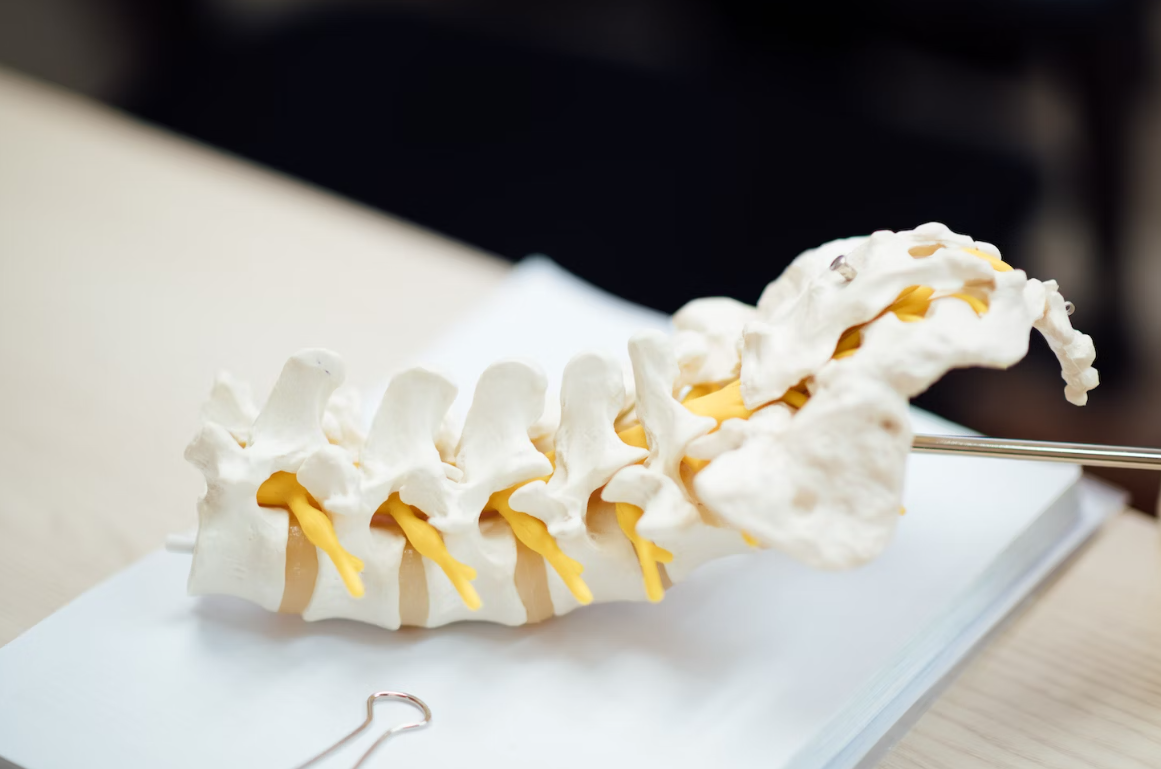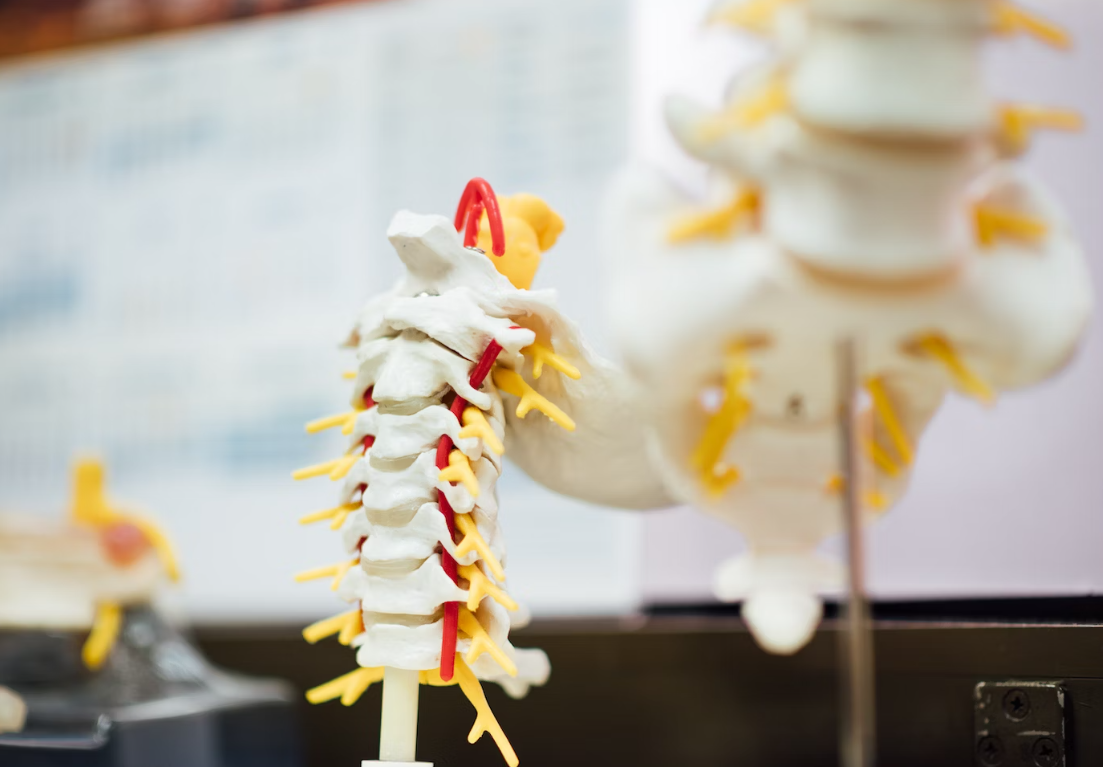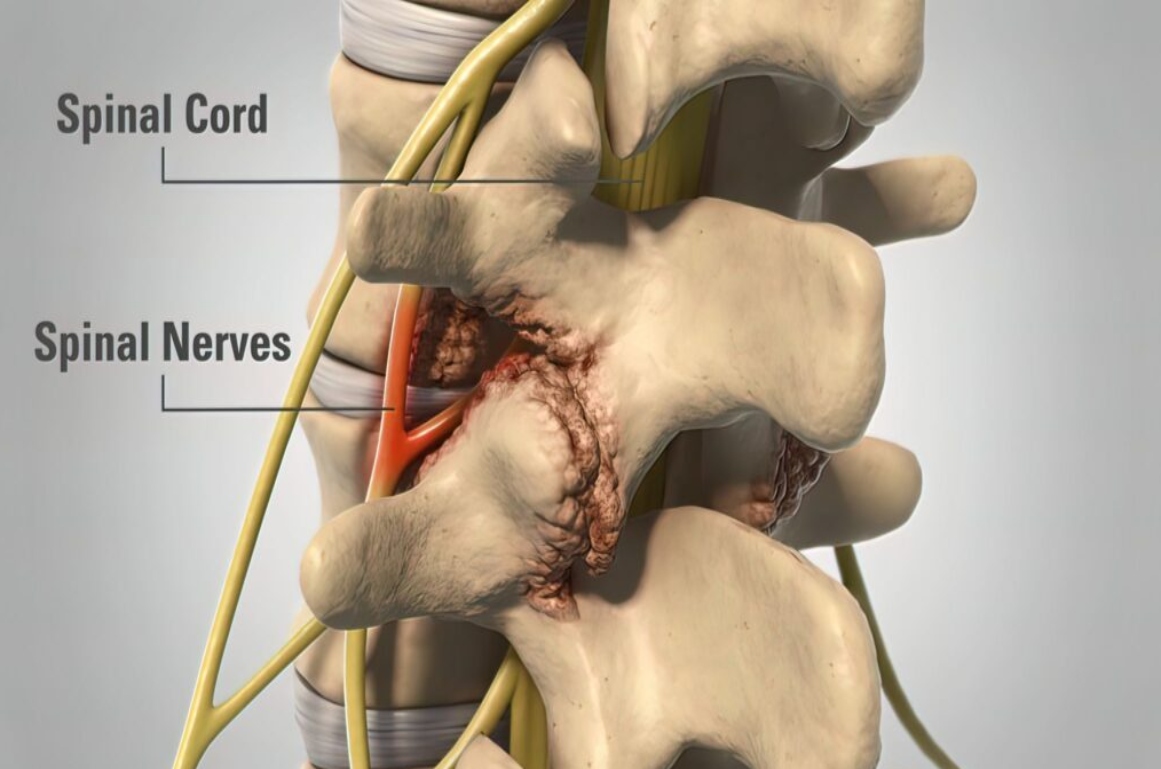Spinal Cord
Decompression
Spinal cord decompression is a surgical procedure that can offer pain relief to patients who have tried a number of treatments for back pain without success. The team at North Texas Neurosurgical Consultants welcomes any questions you have about this procedure and are always happy to help or provide additional information.


What is spinal cord decompression surgery?
Spinal cord decompression surgery (also referred to as a laminectomy, with or without spinal fusion) creates space between the vertebrae where there was none before. In your spine, intervertebral discs separate each vertebra. These cushion the vertebra against the others and make pain-free movement a possibility. When one of these discs is injured or otherwise damaged, the resulting compression of the vertebrae presses on the nerves on the spine. This can lead to pain and other symptoms discussed below.
Over time, the friction of the vertebrae can also create bone spurs that protrude through the lamina. The lamina is the connective tissue at the back of each vertebra that protects the spinal column. This can further increase a patient’s pain. Spinal cord decompression surgery opens up the intervertebral space between the discs to relieve pressure on the nerves. Many patients will also receive a spinal fusion to increase stability.
Spinal cord decompression surgery is a surgical option you may consider when more conservative treatment options have been unsuccessful. The most common condition treated by spinal decompression surgery is spinal stenosis. Other related conditions include:
-
Osteoarthritis
-
Scoliosis
-
Injury to the spine
-
Metastatic spinal tumor
-
Certain bone diseases
-
Rheumatoid arthritis
-
Infection
Spinal cord compression has the following five trademark symptoms:
-
Pain and stiffness in the neck, back, or lower back
-
Sciatic pain that radiates across the buttocks and down the hip and leg
-
Numbness or weakness in the extremities
-
Loss of sensation or numbness in the feet (or weakness that causes loss of foot control)
-
Sexual dysfunction
Cauda equina syndrome occurs when there’s intense pressure on nerves located in the lumbar region. The symptoms of this syndrome are much more serious and require immediate medical attention. If you have any of these symptoms, go immediately to the emergency room:
-
Loss of bowel or bladder control
-
Severe or increasing numbness between the legs, inner thighs, and back of the legs
-
Spreading, severe pain and weakness in one or both legs that makes it hard to walk or get out of a chair
Symptoms may appear suddenly (in the case of injury to the spine), or they may occur over time. If there is any sudden worsening of symptoms, it is important to visit your doctor immediately for diagnosis and treatment.
Spinal decompression surgery recovery time depends on a variety of factors, including:
-
Your health
-
Your compliance with your surgeon’s recovery instructions
-
Which procedure was performed
Spinal cord decompression surgery is an in-patient procedure that generally requires a hospital stay that ranges from one to four days. Once you are released to go home, you will be given a back brace and two prescriptions: one for physical therapy and one for pain medication. Following both of these prescriptions as directed by your doctor gives you the best chance of a speedy recovery!
In general, patients should avoid strenuous exercise for at least two weeks and then gradually add it back in as your pain level (and doctor) allows. Starting a gentle walking program can go a long way towards your recovery, once approved by your doctor.
If you have had a spinal fusion along with spinal cord decompression surgery, your healing time may be longer. It may range from three to six months. Do not let this discourage you. Eat healthy, exercise as you are able, and take good care of yourself and your incision site to speed up your healing time. Stop smoking or using nicotine products to promote faster healing, too.
There are a number of different possible surgical decompression techniques. They include the following:
-
Discectomy: A discectomy removes the portion of the intervertebral disc that is pressing on the nerves. The remainder of the disc is left to provide cushion.
-
Laminectomy: Laminectomy removes the protective lamina, opening the spinal canal to relieve pressure on the nerves.
-
Foraminotomy or foraminectomy: These procedures expand the openings where the nerve roots exit the spinal canal. Of the two, a foraminectomy removes more bone and tissue as needed.
-
Osteophyte removal: This spinal decompression surgery removes bony growths called osteophytes (bone spurs).
In some cases, patients will also have a spinal fusion procedure with a bone graft to stabilize the spine and prevent further compression.
Each procedure is performed under carefully monitored general anesthesia. Once you are comfortable and under anesthesia, your surgeon will create an opening above the affected vertebrae and perform spinal decompression surgery. Once the procedure is complete, the wound is carefully cleaned and closed, and you will be moved to a recovery room.
Spinal decompression surgery risks
As with all surgeries, there are spinal decompression surgery risks. The most common complications (that are still rare) concern a patient’s respiratory reaction to anesthesia. If you have had issues with anesthesia in the past, discuss this with your doctor before surgery.
Other possible risks include:
-
Infection
-
Persistent pain
-
Nerve damage
-
Bleeding
Blood clots are a serious complication. If you feel pain or experience unexplained swelling in your legs, call your doctor immediately. Likewise, if you have a fever, increased pain or drainage at the incision site, or generally feel unwell, call your doctor. This could be a sign of infection.
Spinal decompression surgery success rates
For lumbar spinal stenosis, the spinal decompression surgery success rate is high for a significant majority of patients.
In one study, physical ability was increased and pain levels decreased over five years. As minimally invasive surgical techniques improve, outcomes are positive even among patients who are older or undergo surgery with other health challenges.



